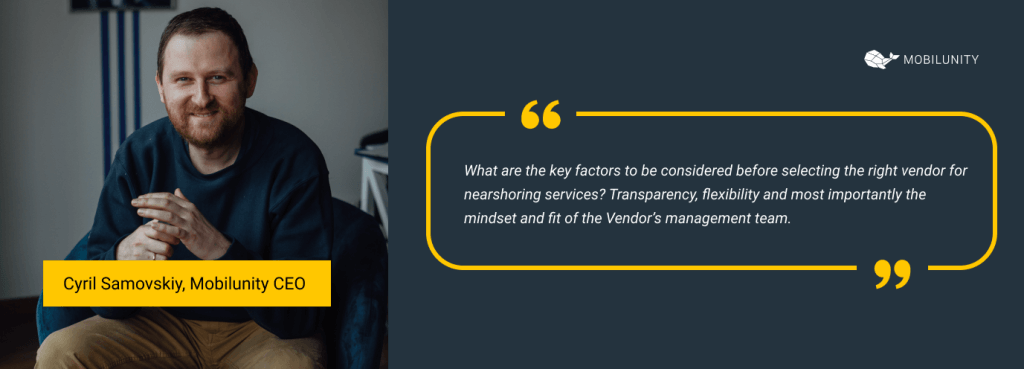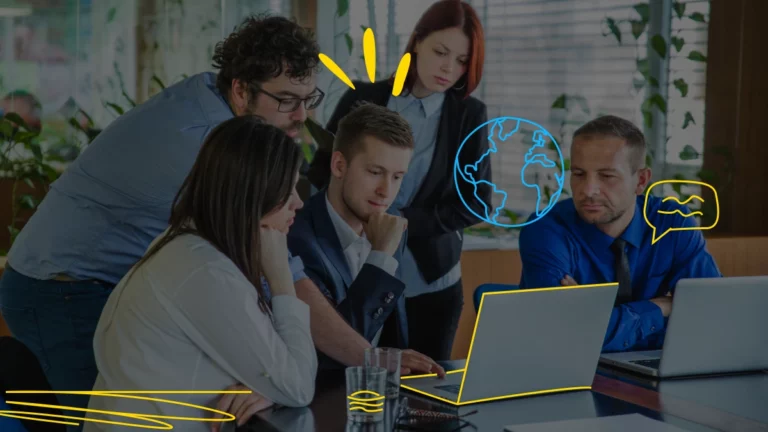How to Manage Global Teams: Co-located vs Distributed Teams in Agile
Agile is often mistakenly considered as a holistic methodology, however, it is worth defining Agile as an approach that includes a wide range of methods to execute the project, no matter if you run in-house employees or global development teams. During the software development life cycle, it is crucial for a team and client to control and assess a project’s direction and the state of particular tasks to guarantee timely delivery, ultimate quality, and minimal losses.
The worldwide tendency among IT companies to adapt to agile practices has risen from 82% (2015) to 91% (2018). Before Agile approaches evolved and gained global popularity on the market, companies used other methodologies within the software development life cycle to plan, analyze, design, code, assess, and maintain projects. Most popular one was waterfall, however, those who engaged in Agile claimed to obtain more quality and productivity during the project execution. The software development in Agile can be performed by either collocated teams or distributed. Scrum, Agile Modelling and Crystal Clear are some of the most widely used methods. We will compare and contrast how a collocated team and distributed software development work with Agile methodology applied.
Types of Teams: Collocated vs Distributed Teams
The software development process can be handled by collocated (in-house) or distributed (remote teams). Regarding Agile-driven projects, both types can perform the tasks of project execution with its advantages and disadvantages. There are dozens of challenges that can be faced by a client no matter if it’s agile colocation practice, or agile in distributed teams. Both teams require proper management in terms of communication, progress tracking, timely delivery, and quality. In order to bring customer satisfaction, this matter should be highly prioritized during all stages of software development.
So, let’s see if Agile methodology can show brilliant outcomes while cooperating with geographically dispersed teams and collocated development teams.
Co-located Teams
Collocated teams (also called in-house) include the employees with the shared physical workplace. They live and work in one city with their employer, have regular working hours, and office benefits. The reason why many organizations still use the traditional way and hire collocated teams is that it takes fewer efforts to align with the Agile principles with in-house employees if compared to remote teams. First, Agile software development is aimed at face-to-face collaboration which is much easier to handle with collocated staff members. Second, teams organization and interaction is a highly important component of Agile software development. It involves all shareholders: from product owners to Quality Assurance specialists who are constantly keep in touch to make sure no room is left for misunderstandings or confusion regarding the project’s requirements. Their collaboration includes daily/weekly meetings where they resolve evolving issues, review the progress, test, assess the pre-selling product’s functionality, and decide on the changes if needed.
Huge tech giants have difficulty setting up all processes having fully virtual teams; that’s why such enterprises like Tesla, Amazon, and Apple are operating mainly with collocated teams. However, such companies as Samsung, Abbyy, and Huawei establish their R&D centers in other countries to promote global operations with ease.
Distributed Teams
Distributed teams (also called remote teams) are employees who are hired via outsourcing or nearshoring models. The decision of which model to choose depends on your preferences, needs, as well as technical background. While outsourcing, the provider takes full control of remote software development, meaning that a client doesn’t have a direct impact on the development process once requirements are agreed upon. Outsourced agile distributed teams challenges your involvement in the process, however, they deliver a proven quality. On the other hand, if you have rich experience in technical matters and they are sufficient to start running distributed agile teams provided by nearshoring vendors you are granted full control over remote teams.
Organizations that hire remote teams to operate on their projects claim that those possess an immense amount of tech skills, dedication, and willingness to deliver quality services. Whether outsourcing or nearshoring, the specialists fulfill all stages of a project: from coding to software testing. Distributed agile teams possess excellent communication skills as well as a high level of responsibility. Even though the practice to manage global teams might seem challenging and risky, there are numerous working tools to handle the collaboration of remote insourcing.
By 2015, job-posting platforms reported an increase of 36% from companies looking for distributed agile teams to fulfill their positions. This number is predicted to grow by up to 50% in the nearest future. InVision, GitLab, HippoEducation – are examples of organizations that considered remote teams as an excellent decision for performing their remote software development in Agile. These companies claim that being fully-virtual brings them the same level of success and productivity as if they had fully-collocated teams. With the vibrant approaches to managing remote teams, they discovered that distributed teams aligned with Agile principles bring the best results.
So whether you’re a budding entrepreneur looking to start your social media marketing agency or a medium-sized, well-established IoT company, don’t be afraid of the distributed workforce. It can bring many benefits to your company!
Hire Dedicated Development Teams with Mobilunity
Building collocated teams is a traditional way, which is considered by organizations like the one that has fewer risks and can easily fit Agile software development methods. Since these teams are not dispersed, they can interact with each other and the management to plan, implement changes, discuss the progress, and other matters face-to-face. However, by bringing distributed teams onboard, Agile principles can be easily maintained due to a variety of approaches to manage the distance between you and developers. Global development teams not only include specialists from around the world but also give you access to new markets and partnership opportunities. Hire dedicated team nail customer satisfaction since you have direct interaction with them from the project’s top to bottom.
To get the maximum benefits from outsourcing and outstaffing solutions, it’s crucial to partner with a reliable services provider. Mobilunity is a renowned Ukrainian IT services provider that has been operating on the global IT market for more than 10 years, assisting small to large-scale companies with finding top-notch IT resources and building dedicated teams for their projects and businesses. We’ve partnered with 40+ companies around the globe, among them being a Canada-based social media management agency ICUC and a Swiss InsurTech company esurance.
Our IT recruiters at Mobilunity have developed our own time-tested methodology for sourcing the best IT talents and assessing their hard and soft skills to find a perfect match for the business needs and values. Should you need a dedicated developer to join the existing project or a full-fledged IT team ready to embark on a new tech challenge, you can trust Mobilunity with providing you with the IT experts needed.

















